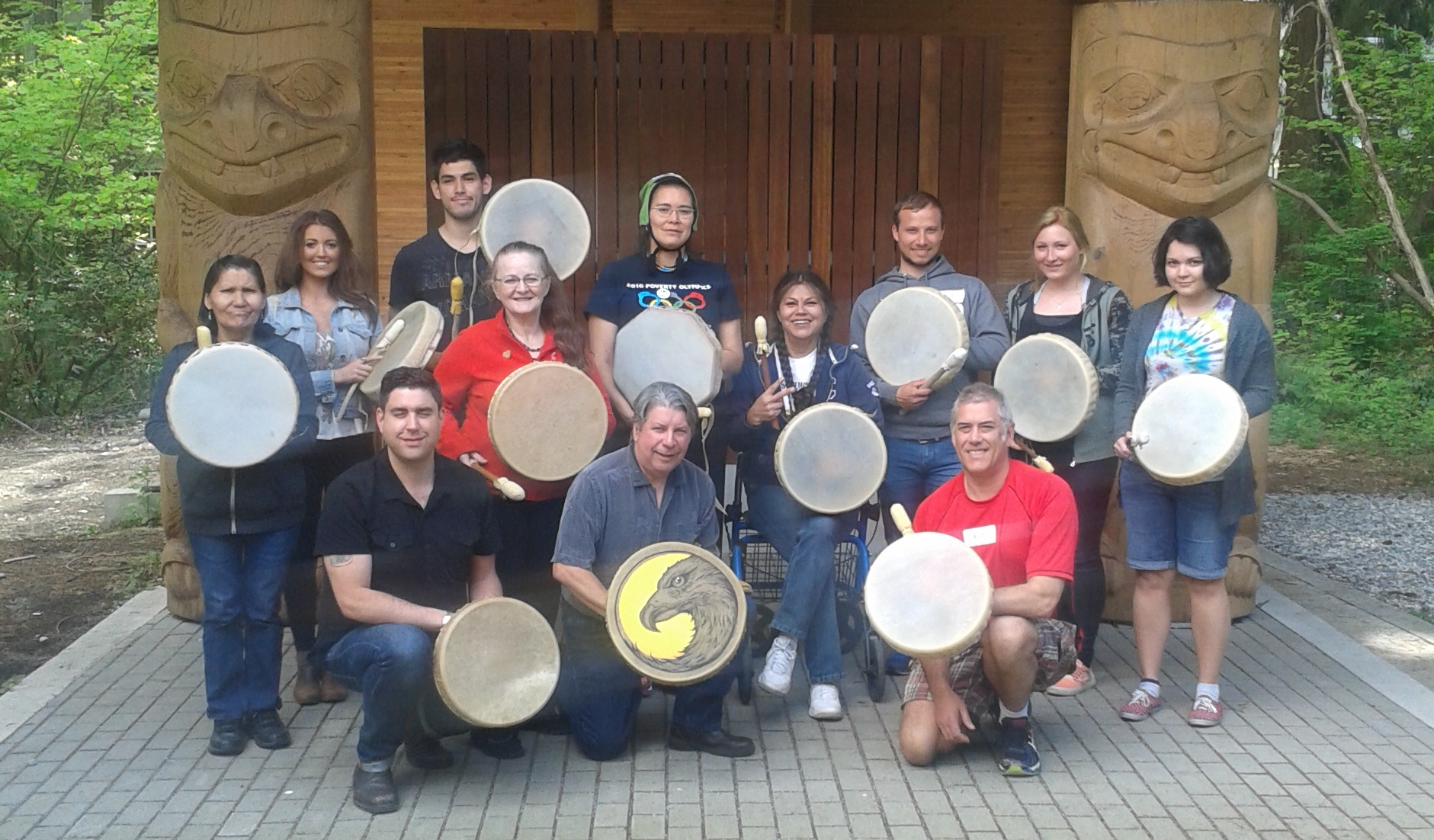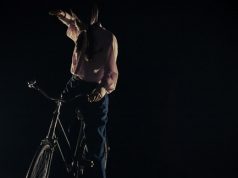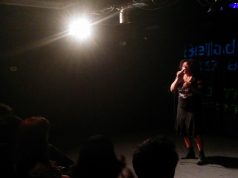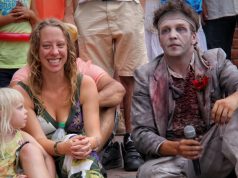
For over a century, the central goals of Canada’s Aboriginal policy were to eliminate Aboriginal governments; ignore Aboriginal rights; terminate the Treaties; and, through a process of assimilation, cause Aboriginal peoples to cease to exist as distinct legal, social, cultural, religious, and racial entities in Canada. The establishment and operation of residential schools were a central element of this policy, which can best be described as “cultural genocide.”
– Opening paragraph of “The Summary of the Final Report of the Truth and Reconciliation Commission of Canada.”
Ko Taranaki tōku iwi. My people are of the New Zealand Māori tribe – Taranaki, and Pākehā (non-Māori). We have one treaty, one language, no reserves and no residential school history. I teach in the Indigenous Independent Digital Filmmaking Program of Capilano University in North Vancouver, and I’m proud to be part of the cultural regeneration of Aboriginal People everywhere. I’m also a dramaturg. At the recent LMDA – Literary Managers and Dramaturgs of the Americas’ conference in New York, the Canadians got together over lunch to discuss our burning issues. I felt we should all read the Truth and Reconciliation Report and include it in our work; that it was the most vital script to be published of late and essential to the future of Canada. After all, the dramaturg’s role is to be the ‘Outside Eye’, to research the world of the work, to shine a light on the vital parts, and to make sure they are brought out to the right audience.
The report is six years of intensive research, something all dramaturgs should aspire to, and weighs in at 388 pages. But the good news is you can have it read to you. Zoe Todd, a Métis writer in Edmonton, and Joseph Paul Murdoch-Flowers, an Inuk man in Iqaluit, asked a diverse group of Canadians who care to upload a video of themselves reading a section of the TRC report.
Dramaturgs also need to read around a work, to take in the critical responses. My advice is you start with Joseph Boyden’s article in Maclean’s – “First Came Truth. Now Comes The Hard Part“.
In it, Boyden is our national dramaturg set upon asking the hard questions: Where did you go to school? Why did Stephen Harper say MMIW-Murdered and Missing Indigenous Women weren’t high on his radar? Why does his government keep cherry picking an RCMP report to prove 1,300 Native women murdered or missing in this country since 1980 is a First Nations’ problem? How can the fact that a First Nations woman is four times more likely to die violently than her non-Native peers not be a priority?
Yes, reconciliation is difficult but the truth can also set us free so that the hard work of healing a country can also be joyful and meaningful. For me, the simplest way to do this is to engage with Aboriginal Peoples any way you can. So here’s my 10 feelgood ways to make a better Canada.
- JOIN THE ROUND DANCE!
In January, 2013, Wab Kinew, Director of Indigenous Inclusion at the University of Winnipeg, started a flash mob round dance on the George Stroumboulopoulos Tonight CBC TV show.
- #myreconciliationincludes
This twitter hashtag records what individuals are pledging to do to bring about reconciliation. Get inspired. Add what you’re doing. It can be as simple as…
- LISTEN TO THE MUSIC!
You know the genius of Tribe Called Red and Tanya Tagaq, so check out Exquisite Ghost –
And 10 more Aboriginal artists making musical waves:
- GET YOUR GAME ON!
Assassin’s Creed 3 was a breakthrough for Indigenous content in computer games with Mohawk consultants hired to ensure their Kanien’kéha language was spoken correctly. But leading the way is Never Alone, which was built in partnership with the Alaskan Native Iñupiat.
- CAN I GET A WITNESS?
I was invited to a healing circle/art therapy workshop for residential school survivors lead by mercurial artist George Littlechild. The Elder next to me told of how his cousins, who he’d previously considered friends, raped him. He cried. I cried. What could I say? … I talked about going to boarding school in New Zealand, witnessing bullying of others but not doing anything about it. And having a prefect punch me and break my thumb for talking after lights were out; but then feeling it worked out in my favour as I said I’d slipped on wet stairs, kept the code, and was left alone after that. Later, the Elder and I hugged and talked of our love of golf. You can bear witness and listen to survivors’ stories.
- BUY LOCAL
Watch APTN / Learn First Languages like Cree through their Word-a-Day Facebook Groups / Listen to Métis in Space’s podcasts as they hilariously dissect Indigenous Peoples on sci-fi film and TV shows / Read Thomas King’s The Inconvenient Indian and Darrell Dennis’s Peace Pipe Dreams / Buy Local from Native Artists and Businesses.
- Rhymes for Young Ghouls (2013)
Watch Mi’gmaq Jeff Barnaby’s debut feature film. It’s a stylish revenge flick set on a reserve and residential school in 1976. It features knockout performances, a killer soundtrack, and so much dope smoking you’ll feel like you’ve been trapped in a bong for two hours… in a good way. It’s a must-see to understand why the Indian Agent became the Boogie Man.
- BANG YOUR DRUM
At Capilano University, I’ve been lucky to make a traditional cedar hat with Shy Watters, and participate in medicine wheel teachings and make drums with Carman Mackay and Phil L’Hirondelle (allmyrelationsteachings.ca). They, and people like them, offer workshops to the public. Find them, get crafty, bang your drum – just do it. David Kirk, our First Nations student advisor, helped organize our workshops, and Truth and Reconciliation events such as the visit of the witnessblanket.ca. As soon as the TRC report came out, he offered to help us incorporate it into our work. That’s his #myreconciliationincludes
- GO BACK TO SCHOOL
In Mission, BC, there’s a cemetery for former staff of the residential school but nothing for the children who perished there. Over 6000 children died at residential schools across Canada, many buried in unmarked graves. Some babies born of rape were put into incinerators alive. Of the 150 000 children who went to residential schools, 1 in 25 died there. This is about the same mortality rate as for those serving in Canada’s armed forces during WWII. The Mission school is now a public park with First Nations’ monument and annual Pow-wow. Find your closest residential school. Make a pilgrimage.
- CITIZEN CANADA
Is Stephen Harper ready? Ready to act on the 94 Calls to Action in the report? This the last one:
94) We call upon the Government of Canada to replace the Oath of Citizenship with the following:
I swear (or affirm) that I will be faithful and bear true allegiance to Her Majesty Queen Elizabeth II, Queen of Canada, Her Heirs and Successors, and that I will faithfully observe the laws of Canada including Treaties with Indigenous Peoples, and fulfill my duties as a Canadian citizen.
I would have much preferred to say this when I was sworn in as a Canadian Citizen in 2008. I’m a treaty person. New Zealand’s founding document is Te Tiriti o Waitangi/Treaty of Waitangi, signed between the Crown and Māori Chiefs in 1840. Our national day is Waitangi Day, February 6th. It’s also Bob Marley’s birthday. For most Kiwis, just like Canucks on Canada Day, it’s just a day off to chillax, spend time with family and friends, drink beer, and enjoy Pacific reggae. But for some Kiwis it’s also a day of protest on the treaty grounds.
For some it’s a day to reflect on how far we’ve come in reconciling with the truths of our country. Can Canada Day become that day? When we ask the hard questions: Did you read the TRC report? Do you want to talk about it? What does your reconciliation include? And, what music shall we dance to now?
My Kiwi mate was a tour bus guide in Eastern Europe. When everyone came back to the bus after visiting Auschwitz he’d play Bob Marley’s “Redemption Song” … Won’t you help to sing these songs of freedom…









